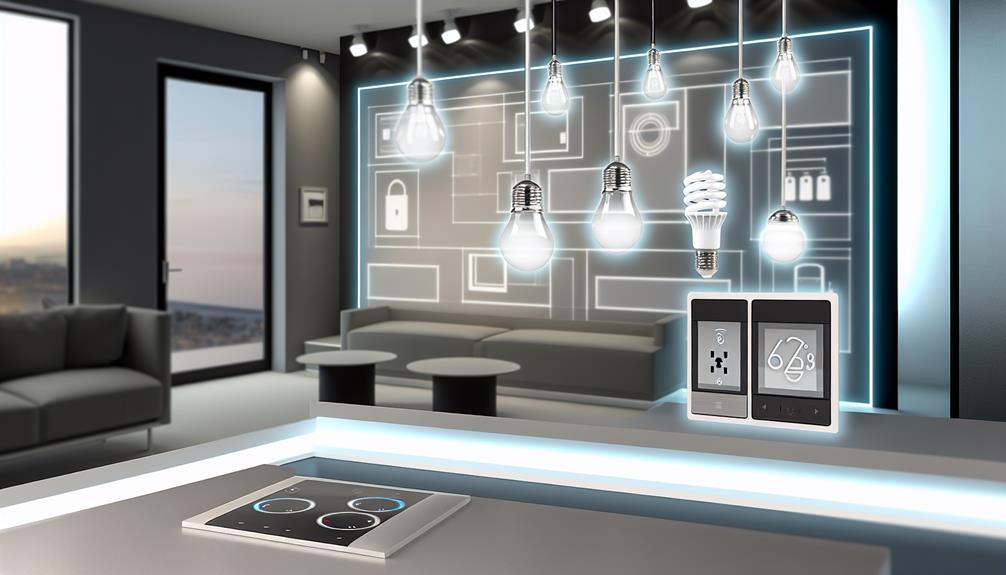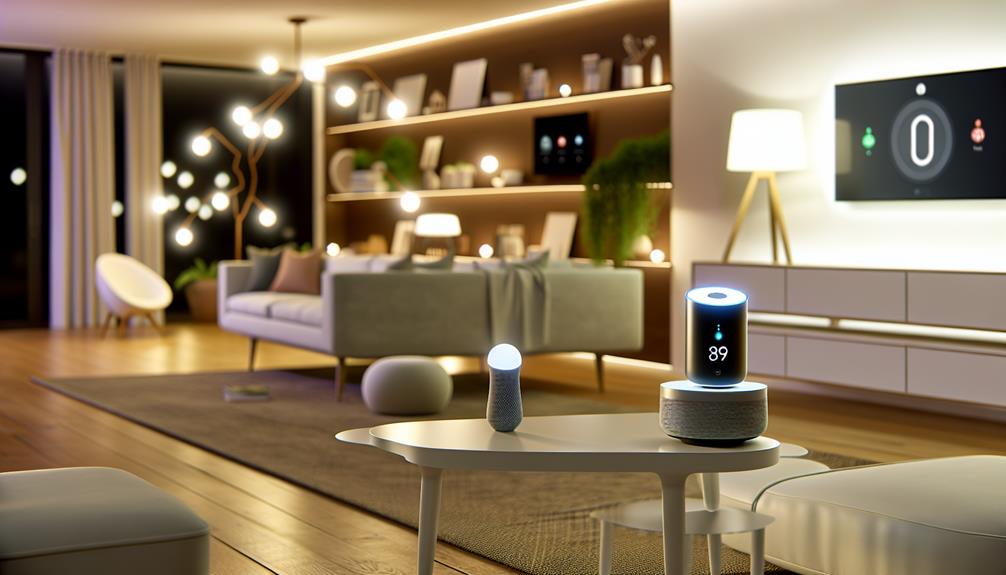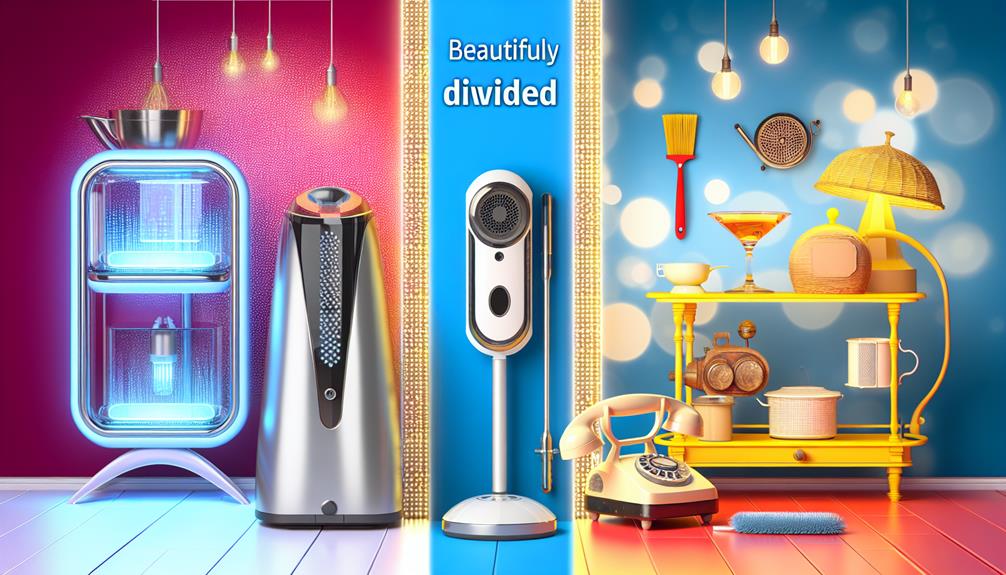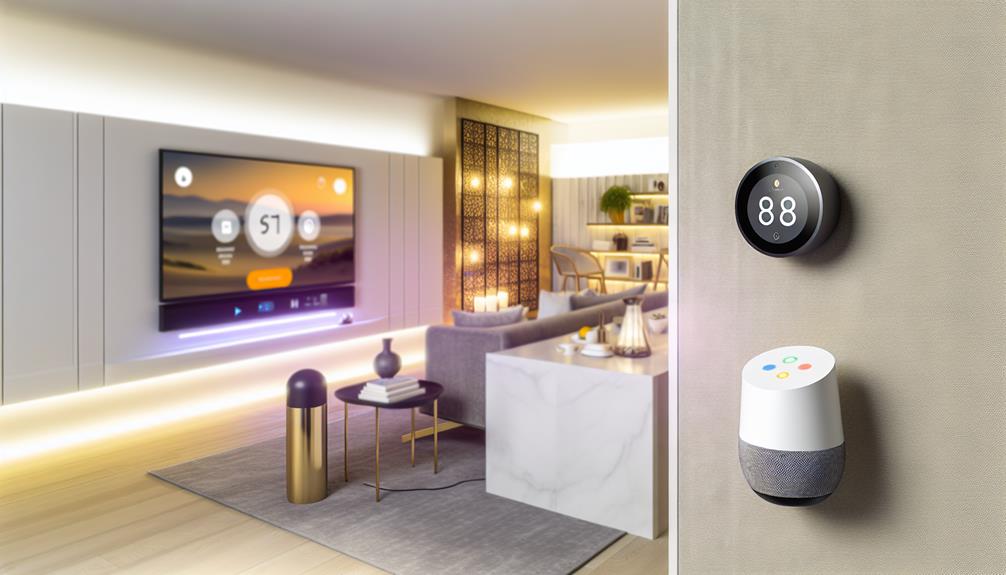7 Best Trusted Smart Gadgets for Energy Efficiency
In an era where sustainability is paramount, integrating smart gadgets into our homes can greatly enhance energy efficiency. The landscape of technology offers a variety of trusted devices, from adaptive smart thermostats to AI-driven appliances, each designed to optimize energy use. These innovations not only lower utility bills but also play an essential role in environmental stewardship. As we explore these seven standout gadgets, it becomes evident that some may offer more than mere convenience; they may redefine how we approach energy consumption altogether. What might that mean for your home and lifestyle?
Key takeaways
- Smart thermostats optimize heating and cooling by learning user behavior and adjusting settings for energy savings based on routines and location.
- Energy monitoring devices provide real-time insights into energy consumption, allowing users to identify energy hogs and reduce their carbon footprint.
- Intelligent lighting systems offer customizable brightness and automated adjustments to enhance energy efficiency while improving ambiance and comfort in the home.
- Automated blinds optimize natural light usage, reducing reliance on artificial heating and cooling while integrating seamlessly with smart home technology.
- AI-driven home appliances adjust their operations based on usage patterns, promoting energy efficiency and lowering utility bills through intelligent design.
Smart Thermostats
Many homeowners seek effective ways to reduce energy consumption and lower utility bills, and smart thermostats have emerged as a leading solution. These innovative devices offer significant smart thermostat benefits, allowing users to optimize their heating and cooling systems effortlessly.
By utilizing advanced algorithms, smart thermostats learn from user behavior and adjust the temperature settings accordingly, creating a tailored environment that promotes energy efficiency.
One of the key features of smart thermostats is their energy saving settings. Homeowners can program schedules that align with their daily routines, minimizing energy use when the home is unoccupied. Additionally, many models are equipped with geofencing technology, which adjusts the temperature based on the homeowner's location, ensuring that energy is not wasted when no one is home.
Furthermore, smart thermostats often provide detailed insights into energy usage, empowering homeowners to make informed decisions about their consumption habits. The integration of user-friendly mobile applications allows for remote control and monitoring, fostering a sense of community among users who prioritize sustainability.
Energy Monitoring Plugs
Energy monitoring plugs serve as essential tools for real-time energy tracking, providing users with immediate insights into their power consumption patterns.
These devices not only enhance understanding of energy usage but also offer remote control capabilities, allowing for efficient management of connected appliances from anywhere.
Real-Time Energy Tracking
In today's environmentally conscious society, real-time energy tracking through energy monitoring plugs has emerged as an important tool for consumers aiming to optimize their energy usage.
These devices provide instant feedback on energy consumption, enabling users to identify patterns and make informed decisions about their electric usage. By monitoring the energy drawn by various appliances, individuals can pinpoint energy hogs and adjust their habits accordingly.
Integrating energy monitoring plugs into daily routines supports sustainability practices, as real-time data empowers users to take actionable steps towards reducing their carbon footprint.
For example, by understanding the energy consumption of devices, users can implement strategies such as unplugging idle electronics or replacing inefficient appliances with energy-efficient alternatives.
Moreover, the ability to track energy consumption in real-time fosters a sense of community among users, as they can share tips and insights on optimizing energy use.
This collaborative approach not only aids individual households but also contributes to a collective effort towards energy conservation.
Fundamentally, real-time energy tracking through monitoring plugs is a crucial component of modern sustainability efforts, driving awareness and encouraging responsible energy consumption habits.
Remote Control Capabilities
Remote control capabilities in energy monitoring plugs enhance user convenience and efficiency, allowing for seamless management of devices from virtually anywhere. These advanced tools empower users to monitor and control their energy consumption directly from a mobile app, ensuring that energy savings are always within reach.
With intuitive interfaces, mobile apps offer real-time insights into energy usage patterns, enabling users to make informed decisions about their consumption habits. This level of control promotes a sense of community among users who prioritize sustainability and energy efficiency.
Additionally, many energy monitoring plugs are compatible with voice control systems, allowing users to operate their devices hands-free, further simplifying the management process. The integration of these features not only optimizes energy usage but also fosters a more connected lifestyle.
Users can schedule devices to turn on or off at specific times, reducing energy waste and contributing to lower utility bills. By leveraging remote control capabilities, individuals can cultivate a more energy-efficient home, embodying a commitment to sustainability while enjoying the convenience of modern technology.
This combination of functionality and eco-consciousness resonates with those looking to belong to a community dedicated to energy efficiency.
Intelligent Lighting Systems
Intelligent lighting systems represent a significant advancement in energy efficiency, featuring smart bulbs that offer customizable brightness and color settings.
These systems can be automated to operate based on occupancy or time of day, enhancing both convenience and energy conservation.
Additionally, control options through mobile applications allow users to monitor and adjust their lighting remotely, optimizing energy usage in real-time.
Smart Bulb Features
Smart bulbs are revolutionizing the way we approach home lighting, offering a range of features that enhance both convenience and energy efficiency. One of the standout characteristics of smart bulbs is their ability to adjust color temperature, allowing users to create the perfect ambiance for any occasion.
Whether you prefer a warm glow for relaxation or a cool light for productivity, smart bulbs cater to your specific needs, promoting well-being and comfort in your living spaces.
Additionally, smart dimming capabilities enable users to fine-tune brightness levels, providing flexibility in lighting that traditional bulbs simply cannot match. This not only contributes to energy savings by allowing users to reduce light intensity when full brightness is unnecessary but also helps to extend the lifespan of the bulbs themselves.
Moreover, many smart bulbs are compatible with home automation systems, allowing for seamless integration with other smart devices. This feature fosters a sense of belonging to a modern, interconnected lifestyle.
To summarize, the innovative features of smart bulbs, such as adjustable color temperature and smart dimming, make them an essential component of energy-efficient home lighting solutions.
Automation and Control Options
The integration of smart bulbs into home lighting systems opens the door to advanced automation and control options that greatly enhance energy efficiency. These intelligent lighting systems leverage machine learning integration to adapt to user habits and preferences, optimizing energy consumption without sacrificing convenience or comfort.
One of the most appealing aspects of modern smart lighting solutions is their user-friendly interfaces, which allow homeowners to easily program schedules, adjust brightness, and change colors through mobile applications or voice commands. This intuitive design fosters a sense of belonging and empowers users to take control of their energy usage effectively.
Moreover, the ability to create lighting scenes tailored to specific activities or moods can further minimize energy waste. For instance, smart bulbs can automatically dim when a room is unoccupied or adjust based on natural light availability, ensuring that energy is only used when necessary.
As consumers increasingly seek sustainable solutions, the synergy between smart bulbs and automation technologies represents a significant step toward a more energy-efficient future, aligning with both environmental goals and the desire for a comfortable, connected home.
Automated Blinds
Automated blinds represent a significant advancement in home technology, seamlessly integrating convenience with energy efficiency. These innovative window treatments offer an array of benefits, including enhanced control over natural light, improved insulation, and reduced energy costs.
By automatically adjusting to the time of day or ambient light levels, automated blinds help maintain a comfortable indoor environment, reducing the need for artificial heating and cooling.
When considering installation, it is essential to assess your window size and type, as well as the chosen automation system—whether it be remote-controlled, app-enabled, or voice-activated.
For peak performance, verify that the blinds are compatible with your smart home ecosystem. Additionally, professional installation is advisable for complex systems, although many DIY options are available for those who prefer a hands-on approach.
The integration of automated blinds not only elevates your home's aesthetic appeal but also fosters a sense of belonging to a community that values sustainability and innovation.
Smart Power Strips
Five innovative features make smart power strips an essential addition to any energy-efficient home.
These devices not only enhance convenience but also greatly contribute to reducing energy consumption. With the ability to manage multiple electronics simultaneously, smart power strips empower homeowners to take control of their energy use.
- Surge Protection: Smart power strips come equipped with surge protection, safeguarding sensitive electronics from voltage spikes and ensuring longevity.
- Device Prioritization: These strips allow users to set priority levels for different devices, automatically cutting power to less critical appliances when prioritized devices are in use.
- Remote Control and Scheduling: Many smart power strips can be controlled remotely or scheduled to turn off at certain times, helping to eliminate phantom energy consumption.
AI-Driven Home Appliances
AI-driven home appliances represent a considerable advancement in the pursuit of energy efficiency and convenience. By leveraging energy saving technology and AI integration, these devices enhance their operation based on user habits and real-time data, markedly reducing energy consumption.
For instance, smart refrigerators can assess inventory and adjust cooling levels accordingly, minimizing waste and energy use. Similarly, AI-powered washing machines can determine the ideal wash cycle based on the load size and fabric type, ensuring efficient water and energy use without compromising performance.
These innovations not only contribute to lower utility bills but also foster a more sustainable lifestyle.
Moreover, AI-driven thermostats learn from occupant behavior, allowing for precise temperature control that adapts to individual preferences while conserving energy during unoccupied periods.
Such intelligent systems enable users to feel a sense of belonging in the eco-conscious community, where every small action contributes to a larger environmental impact.
Connected Solar Solutions
As consumers increasingly prioritize sustainability, connected solar solutions have emerged as a pivotal technology in enhancing energy efficiency and reducing reliance on traditional power sources.
By integrating solar panel systems with smart technology, households can optimize their energy usage and harness the full potential of solar energy.
Connected solar solutions offer numerous advantages, including:
- Real-time monitoring: Users can track energy production and consumption through mobile applications, allowing for informed decisions regarding energy usage.
- Solar energy storage: Advanced battery systems enable excess energy to be stored for later use, ensuring a steady power supply even during outages or low sunlight conditions.
- Seamless solar panel integration: These systems are designed to work cohesively with existing home automation technologies, creating a more efficient and interconnected energy ecosystem.
As the demand for sustainable living continues to grow, connected solar solutions not only empower consumers to take control of their energy consumption but also foster a sense of community among those committed to eco-friendly practices.
This collective shift towards solar energy can greatly contribute to a greener, more sustainable future for all.
Frequently Asked Questions
How Do Smart Gadgets Improve Energy Efficiency in Homes?
Smart gadgets enhance energy efficiency in homes through energy monitoring and automated scheduling. By providing real-time data and control, these technologies optimize energy usage, reduce wastage, and promote sustainable living practices among conscientious homeowners.
Are Smart Gadgets Compatible With All Home Systems?
Approximately 70% of households experience compatibility challenges with smart home integration. While many smart gadgets are designed for widespread compatibility, users should verify specifications to confirm seamless functionality across diverse systems and devices within their homes.
What Is the Average Lifespan of These Smart Devices?
The average lifespan of smart devices typically ranges from 5 to 10 years, reflecting their average durability and device longevity. Factors such as usage patterns and technological advancements can greatly influence this timeframe.
Do Smart Gadgets Require a Stable Internet Connection to Function?
Smart gadgets operate like a finely tuned orchestra, where internet dependency serves as the conductor. Without a stable connection, connectivity issues can disrupt functionality, leading to diminished performance and user experience, ultimately affecting overall efficiency.
Can I Control Smart Gadgets Remotely Using My Smartphone?
Yes, smart gadgets can be controlled remotely using a smartphone, enabling remote monitoring and management. This smartphone integration enhances user convenience, allowing for real-time adjustments and energy efficiency, fostering a connected and engaged lifestyle.



